Frankly, I’m not sure how it all began…
Perhaps the idea for this project (project?!?!) came to be ‘during’ as opposed to ‘before’ it started. Anyone who knows me knows that I have always stated that in one year you can do one or maximum two marathons. This applies to average level runners as well as professionals. Maybe a few elite level amateurs can permit themselves as many as four or five marathons a year. But this is referring to healthy, light athletes with very special metabolic and muscular characteristics. In other words, a very select few.
Then there are the marathon runners with compulsive disorders, those who run a marathon once a week, like attending Sunday mass, who rack up the miles, but at the same time really put their muscles, joints, and mitochondria through the grinder. “For the pleasure of running,” they say. That’s their problem.
But let’s get back to me.
Having just finished the London Marathon a little disappointed with my time (now fancy that), I suggest to my spouse that we sign up for the Stockholm marathon which is just five weeks later. I expected some kind of negative response. Instead I got a smile and a “yes, why not.” Only later do I realise that the reply was strongly influenced by her own overwhelming desire to cross Stockholm off the list in her travel diary.
So it’s done. Two marathons in a month. A classic gesture that without an apparent motive behind it, would appear to be an imperfect contradiction. And so, let’s make it perfect: what if I added a nice autumnn series to the project? New York is a must-do: friends, an invigorating week in the most inspiring city in the world. But there is also Berlin, as fast as an “M3” with a remapped ECU in search of a personal best. Certainly this desire to only do races abroad runs the risk of making me seem more of a snob than I really am. I think once more about the words I heard years ago from Linus (an Italian radio DJ and well-known distance runner), about doing Florence after an “easy” New York. I could go for that.
Ok, that’s decided. So what should the project be about?!?
How on earth do I know? Let’s have a think…to see how my body reacts? Bah, just between you and me, it doesn’t seem as interesting as monitoring the output of Armstrong on the Tour or Federer’s sleep pattern (11 hours a night!!).
To try and understand how to calibrate training between tapering and recovery? Technical issues are not that captivating either. It’s not as if I’m an ultra runner that has just completed the Spartathlon.
Perhaps a plausible experiment would be to try to evaluate the response to a commitment that is emotionally very demanding, such as the marathon, trained for over six months. Well, FIVE marathons that is. There we go. That could be the project. Pre-race stress, performance-related anxiety, mind and body work. But nothing is more subjective than an emotion, so that won’t do either.
And in the end, right at the very end, it came to me. There is a big advantage in doing five marathons, especially when you do them back-to-back. You can compare them closely, one after the other, all in one go. Without the contamination of the typical long periods of time that separate them. Public support, organisation, course route, services. A close comparison.
This is what project IN5ANITY could be all about. It could be used to make a marathon ranking. That’s it.
LONDON – STOCKHOLM – BERLIN – NEW YORK – FLORENCE
Communication 8. 7. 8. 10. 6
Organization 8. 8. 6. 9. 5
Crowd 9. 7. 8. 10. 6
Services 8. 9. 8. 8. 7
Course 10. 8. 9. 10. 10
Inspiration 10. 7. 8. 10. 6
Expo 9. 6. 8. 10. 5
A short explanation of the logic behind it, if that’s ok…
With communication I am referring to the apparatus that kicks in about a year before the race date. It informs, updates, motivates and perhaps even leads to a few sales…and here the Anglo-Saxon approach is obviously unbeatable. Deafening was the silence in terms of communication from Florence, but with one justification: I registered just one month before the race date. But in that last month, just as an example, you receive an email everyday from New York, at least one. From Florence there was telepathic communication only…maybe they used Twitter…
Organisation covers everything: from the collection of the race number, to drink stations during the race, right up to the number of toilettes. New York, London and Stockholm were all in line. But in New York there were 50,000 of runners. The equivalent of a packed Manchester United stadium – just to give you an idea. A monstrous multitude. And I didn’t find a flaw. Tragicomic, however, was situation in Florence as crowds of runners desperately fought their way into the start zones, having to push and squeeze their way past friends, spectators and other runners attempting to move in the opposite direction. It must have been designed by a student in the Science of Chaos. No less bizarre was the technique used to hand out the race numbers in Berlin: each printed out one by one so as not to waste paper on those who didn’t turn up to collect their number. An abuse of efficiency that quickly turned into inefficiency.
The crowd: the Germans were surprising, I assumed somehow they would be apathetic, instead they were warm and encouraging, even with those “wheezing” in at five hours and more. The roar from the British crowd at Tower Bridge was incredible. My heart rate shot up to 170 with the emotion of it. But New York can’t be beaten. Number 1 by far. The cry around the south bend after the solitude of Queensboro Bridge is an unforgettable feeling. It sends shivers down your spine.
With services I am referring to the whole system that ranges from merchandising to the possibility of buying your race photos and videos. All did well in my opinion. However, the Americans slipped up this year with the huge delay in releasing the race photos; in December I still hadn’t received any news from them.
The course, it goes without saying that this refers to the race route. Florence, with a course planned by Brunelleschi, with a little consultancy from Giotto and various minor architects such as Minozzo and Leon Battista Alberti, wins hands down. London and New York get a spot on the podium. Special mention for Berlin for the section under the Brandenburg Gate.
Inspiration, I am well aware, is about as subjective as it gets and so perhaps we should leave it be. Gold medal awarded ex aequo to the Brits as they invented sport, just as they invented a concept that we like very much at almostthere: be a sport maker!!
And finally the EXPO, which doesn’t refer to the Universal Exposition (in 2015 in Milan), but the most fun, playful and childlike part of the great ‘26.2’ carnival. The marketing and entertainment gurus’ could not but win the gold also in this field: the Expo of the NYC Marathon is an authentic adventure playground, where you find 1000m² (!!) of stands from the official sponsor (Asics), the DJ mixing Jay-Z with the Star Spangled Banner of Jimi Hendrix, kangaroo and strawberry flavoured energy chews, Dean Karnazes around the corner signing posters for both his big and little fans, and above all else: credit cards on fire…disqualified from this category is Florence as it doesn’t have an Expo. Yes, you read right, it doesn’t have an expo. The exhibition area that was labelled as “expo” on the map was in reality a path of abstinence and deprivation of the saddest order. The fact that I left empty handed has officially been declared a world record at sea level.
Thus ends a self-referenced essay that I dedicate to others.
If you are unsure about which marathon to do, feel free to be guided by these few frank lines with no commercial objective. I can guarantee that I haven’t received a commission from any of them. Really, not even from New York…



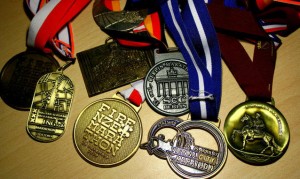
 Subscribe to our newsletter to have the latest updates delivered straight to your inbox.
Subscribe to our newsletter to have the latest updates delivered straight to your inbox. TRI60 DISTANCE TRAINING
TRI60 DISTANCE TRAINING 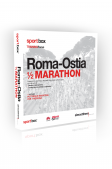 Sportbox Training Focus Roma-Ostia Half Marathon 2019
Sportbox Training Focus Roma-Ostia Half Marathon 2019 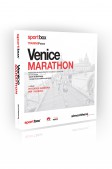 Sportbox Training Focus Venice Marathon 2019
Sportbox Training Focus Venice Marathon 2019 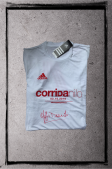 t-shirt limited edition autographed by Danilo Goffi
t-shirt limited edition autographed by Danilo Goffi 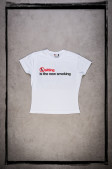 Women's Sitting technical t-shirt
Women's Sitting technical t-shirt 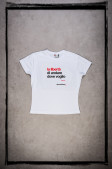 Women's dove voglio technical t-shirt
Women's dove voglio technical t-shirt 